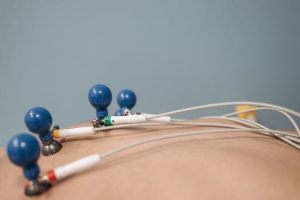Brain-Based Learning: Applying Neuroscience to Education
Welcome to the world of education and neuroscience, where the latest research and breakthroughs are constantly shaping the way we learn and teach. In recent years, there has been a growing buzz around the concept of brain-based learning and its potential to transform education. But what exactly is brain-based learning, and how does it apply to our classrooms and schools? In this article, we’ll delve into the fascinating world of neuroscience and explore how we can use this knowledge to enhance the learning experience for our students through brain-based learning techniques.
The Basics of Brain-Based Learning
Brain-based learning is a teaching approach that is grounded in the principles of neuroscience and cognitive psychology. It recognizes the fact that the brain is not a passive vessel waiting to be filled with information, but instead, an active organ that is constantly processing, analyzing, and making connections. This approach emphasizes the importance of creating a learning environment that is in alignment with how the brain naturally learns, and applies this understanding to instructional strategies and practices.
The Role of Neuroscience in Education
The brain is a complex and intricate organ, and our understanding of its functioning has come a long way in the past few decades. Thanks to advances in neuroscience research, we now have a better understanding of how the brain learns and processes information. This knowledge has significant implications for education and has given rise to the field of educational neuroscience.
The field of educational neuroscience seeks to bridge the gap between the worlds of education and neuroscience, and utilizes findings from brain research to inform and improve teaching practices. By understanding how the brain learns, we can create more effective learning experiences and help our students reach their full potential.
Applying Brain-Based Learning in the Classroom
So how do we apply the principles of brain-based learning in our classrooms? Here are some techniques and strategies that are supported by neuroscience research and can make a positive impact on our students’ learning:
Emphasize Active Learning
Research has shown that the brain learns best when it is actively engaged in the learning process. This means that we should strive to create opportunities for our students to participate and interact with the material rather than passively listening or reading. This can be achieved through activities such as discussions, debates, problem-solving tasks, and hands-on projects.
Create Meaningful Connections
Our brains are wired to make connections, and this is especially true when it comes to learning. By creating meaningful connections between new information and our students’ prior knowledge and experiences, we can enhance their understanding and retention of the material. Encourage your students to make connections and draw on their own experiences in the learning process.
Focus on Brain-Friendly Environment
The physical environment can have a significant impact on learning. A cluttered, noisy, or chaotic classroom can negatively affect students’ ability to focus and retain information. On the other hand, a calm, organized, and stimulating environment can enhance learning. Pay attention to the lighting, temperature, and overall atmosphere in your classroom to create a brain-friendly learning environment.
Personalize Learning
Each of our brains is unique, and what works for one student may not work for another. By personalizing learning, we can cater to our students’ individual needs, strengths, and learning styles. This could mean providing different options for completing assignments or allowing students to choose topics that they are interested in. By acknowledging and catering to individual differences, we can maximize our students’ learning potential.
Challenges and Limitations of Brain-Based Learning
As with any approach, brain-based learning has its challenges and limitations. Firstly, the field of educational neuroscience is still in its early stages, and there is still much to discover and understand about the brain and how it learns. Therefore, we must approach brain-based learning with a critical eye and be open to evolving our practices as we learn more.
Moreover, it’s essential to note that brain-based learning is not a one-size-fits-all approach. The brain is a complex and dynamic organ, and what works for one student may not work for another. As educators, it is our responsibility to adapt and tailor our practices to meet the diverse needs of our students.
The Future of Brain-Based Learning
The potential of brain-based learning to enhance education is vast, but we are just scratching the surface. As educational neuroscience continues to evolve, we can expect to learn even more about how the brain learns and how we can use this knowledge to optimize the learning experience for our students. With the advancement of technology, we can also anticipate the development of tools and resources that will further support brain-based learning in the classroom.
In Conclusion
Brain-based learning is not a fad or a trend; it’s a way of approaching education that is based on scientific evidence. By understanding how the brain learns and applying this knowledge in our classrooms, we can create more effective and meaningful learning experiences for our students. By continuously learning and adapting to new findings, we can pave the way for a more innovative and impactful approach to education. Let’s embrace the world of brain-based learning and unlock the full potential of our students’ brains.









